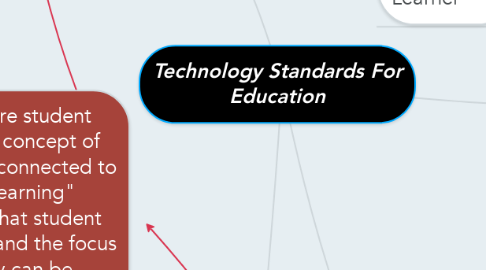This map contains 4 technology standards for education. Each standard has at least 5 descriptor points. From there, the red lines bring the standards together and identify connections between the standards. (red boxes) Although there are only 7 red boxes, 10 connections have been made, some utilizing the same connections.


